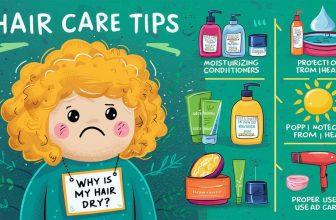How Long Does Sunscreen Last on the Face?

As the sun graces us with its warmth, the importance of safeguarding our skin against its potent rays becomes increasingly evident. Sunscreen is a frontline defender, shielding our face from the sun’s ultraviolet (UV) rays, which can lead to sunburn, premature aging, and an elevated risk of skin cancer. However, while we understand the necessity of sun blockers, a crucial aspect often overlooked is their longevity on our skin. How long does sunscreen last on the face, and what factors contribute to its effectiveness over time? In this blog post, we delve into the intricacies of sunblock application, exploring the fundamentals and shedding light on the various elements that influence its duration. Join us on this journey as we uncover the secrets to maximizing the protective potential of your sunblock regimen.
Understanding Sunblocker Basics
In sun protection, sunscreen serves as a stalwart guardian against the harmful effects of ultraviolet radiation. To grasp its efficacy, it’s essential to delve into the fundamental aspects that define sunscreen and its application.
A. SPF (Sun Protection Factor)
Sun Protection Factor, known as SPF, is a numerical indicator of a sunscreen’s ability to shield the skin from UVB rays. The higher the SPF, the greater the protection. For instance, SPF 15 filters out approximately 93% of UVB rays, while SPF 30 provides about 97% protection. It’s crucial to choose an SPF level that aligns with your skin type and the sun intensity of your surroundings.
B. Different Types of Sunscreens
Sunscreens come in two main types – chemical and physical (mineral) sunscreens.
- Chemical Sunscreens: These contain organic compounds that absorb UV radiation, converting it into harmless heat. Common chemical sunscreen ingredients include avobenzone, octocrylene, and oxybenzone.
- Physical (Mineral) Sunscreens: These employ minerals like zinc oxide or titanium dioxide to create a physical barrier that reflects and scatters UV rays away from the skin.
C. Importance of Applying the Right Amount
The effectiveness of sunscreen is contingent on applying the recommended amount. As a general rule, it’s advised to use about one ounce (30 milliliters) of sun blocker for each application on exposed skin. Insufficient application may result in reduced protection, emphasizing the need for thorough and even coverage.
By grasping these basic concepts, we lay the foundation for a more comprehensive understanding of sunscreen and its role in safeguarding our skin from the sun’s potentially harmful rays.
Factors Influencing Sunscreen Duration
While the application of sunscreen is a crucial step in sun protection, its effectiveness over time is influenced by various factors. Understanding these elements can help us gauge how long sunscreen lasts on the visage and tailor our application accordingly.
A. Sweat and Water Resistance
The level of resistance to sweat and water varies among sunscreen formulations. Water-resistant sunscreens are designed to maintain their efficacy during water exposure, but the duration of this resistance can differ. It’s important to consider the activity level and potential for water exposure when choosing a sunscreen to ensure prolonged protection.
B. Environmental Conditions (Heat, Humidity)
Sunscreen efficacy can be affected by environmental factors such as heat and humidity. High temperatures may cause sunblockers to break down more quickly, while humidity can impact their adherence to the skin. Understanding the climate and weather conditions in your surroundings aids in selecting a sunscreen that can withstand the specific challenges posed by your environment.
C. Sunscreen Formulation and Ingredients
Different sunscreen formulations and ingredients contribute to varying durations of protection. Chemical sunscreens may need to be reapplied more frequently, especially after sweating or swimming, whereas physical (mineral) sunscreens often provide longer-lasting protection. Assessing the composition of the sunscreen can guide users in choosing products that align with their specific needs and activities.
By recognizing these factors, individuals can make informed decisions about when and how often to reapply sunscreen, ensuring sustained protection against the sun’s harmful rays. Adapting sunscreen application practices based on the context and environmental conditions is essential to maximize its duration and efficacy.
Typical Sunscreen Duration Guidelines
Ensuring effective sun protection involves selecting the right sunscreen and understanding when and how frequently it should be reapplied. Here, we explore general guidelines to help users determine the duration of sunscreen protection and establish a routine that optimally shields the skin from harmful UV radiation.
A. General Recommendations for Reapplication
- Every Two Hours: As a standard practice, sunscreen should be reapplied every two hours to maintain continuous protection. This time frame accounts for sweating, environmental conditions, and potential product wear-offs.
- After Swimming or Excessive Sweating: Following swimming or engaging in activities that induce heavy sweating, it’s advisable to reapply sunscreen immediately. Water-resistant formulations may offer extended protection, but reapplication remains crucial for sustained efficacy.
B. Considerations for Various Activities
- Water Activities: If you’re participating in water activities, choose a water-resistant sunscreen and reapply every 40 to 80 minutes, depending on the product’s specified water resistance duration.
- Intense Sun Exposure: During prolonged periods of sun exposure, such as at the beach or during outdoor events, consider applying sunscreen more frequently than every two hours, especially if sweating or water exposure occurs.
C. Importance of Following Product-Specific Instructions
- Check the Label: Sunscreen products often come with specific instructions regarding reapplication intervals. It’s essential to read and follow these guidelines to ensure optimal protection.
- Sunscreen Variations: Different sunscreen formulations, including those tailored for specific activities or skin types, may have unique reapplication recommendations. Tailor your approach based on the specific instructions provided for the product you are using.
By adhering to these typical guidelines, individuals can establish a sun protection routine that aligns with their activities and environmental conditions, promoting consistent and effective defense against the sun’s harmful effects.
Sunscreen and Skin Types
Our skin is as unique as we are, and understanding how different skin types interact with sunscreen is pivotal for effective sun protection. Tailoring your sunscreen choice to your specific skin type ensures not only optimal defense against UV rays but also a comfortable and personalized experience. Here, we explore the impact of various skin types on sunscreen effectiveness and offer recommendations for different skin characteristics.
A. Impact of Different Skin Types on Sunscreen Effectiveness
- Fair Skin: Individuals with fair or light skin are often more susceptible to sunburn. Sunscreens with higher SPFs are recommended, and more frequent reapplication may be necessary due to the increased risk of UV damage.
- Dark Skin: While darker skin tones provide some natural protection against UV rays, they are not immune to sun damage. Sunscreens with broad-spectrum protection are essential for preventing long-term effects like hyperpigmentation and premature aging.
- Sensitive Skin: Those with sensitive skin may benefit from mineral-based sunscreens containing zinc oxide or titanium dioxide. These physical blockers are less likely to cause irritation and provide gentle yet effective protection.
B. Recommendations for Sensitive or Oily Skin
- Sensitive Skin: opt for sunscreens labeled as “fragrance-free” or “hypoallergenic.” Look for formulations designed for sensitive skin to minimize the risk of irritation.
- Oily or Acne-Prone Skin: Gel-based or oil-free sunscreens are ideal for individuals with oily or acne-prone skin. These formulations protect without clogging pores or exacerbating skin concerns.
C. Importance of Customizing Sunscreen Choice
- Daily Use: Regardless of skin type, incorporating sunscreen into your daily skincare routine is crucial. Choose a product that complements your skin’s unique needs and feels comfortable for everyday use.
- Reapplication Considerations: Depending on your skin type, you may need to adjust the frequency of sunscreen reapplication. Factors such as sweating, water exposure, and the intensity of sunlight should influence your reapplication strategy.
By recognizing the diverse needs of different skin types, individuals can make informed decisions when selecting sunscreens, ensuring both efficacy and comfort in their sun protection regimen.
Tips for Prolonging Sunscreen Effectiveness
Ensuring that your sunscreen remains effective throughout sun exposure requires more than just an initial application. By incorporating strategic practices into your sun protection routine, you can prolong the effectiveness of your sunscreen, providing continuous defense against the sun’s harmful UV rays. Here are some valuable tips to enhance and extend the protective benefits of your sunscreen:</p>
A. Reapplication Strategies
- Follow the Two-Hour Rule: Adhere to the general guideline of reapplying sunscreen every two hours, even on cloudy days. This practice helps counteract the effects of sweating, water exposure, and product wear-off.
- Immediate Reapplication after Swimming or Sweating: If you engage in water activities or experience heavy sweating, reapply sunscreen immediately. Water-resistant formulations provide extended protection but necessitate timely reapplication.
B. Choosing the Right SPF for Specific Activities
- Higher SPF for Prolonged Sun Exposure: When anticipating extended sun exposure, opt for a sunscreen with a higher SPF to enhance protection. This is especially crucial during outdoor events, beach days, or activities that involve prolonged time in the sun.
- Consider Water-Resistant Formulas for Water Activities: For swimming or water-based activities, choose a sunscreen specifically labeled as water-resistant. These formulations adhere better to the skin, providing more prolonged protection in aquatic environments.
C. Utilizing Additional Sun Protection Measures
- Wear Protective Clothing: Combine sunscreen with physical protection by wearing hats, sunglasses, and clothing that covers exposed skin. This reduces the overall UV exposure and complements the sunscreen’s efforts.
- Seek Shade During Peak Hours: Limit sun exposure during peak sunlight hours, typically between 10 a.m. and 4 p.m. Finding shade helps decrease the intensity of UV radiation, reducing the need for frequent sunscreen reapplication.
By integrating these tips into your sun protection routine, you can maximize the longevity of your sunscreen and fortify your defense against the sun’s rays. Consistent and informed application ensures that your skin remains shielded, promoting overall skin health.
Common Misconceptions about Sunscreen Duration
As crucial as sunscreen is for protecting our skin from the sun’s harmful effects, several misconceptions often surround its application and duration of effectiveness. Clarifying these myths is essential to ensure individuals make informed choices about sun protection. Here, we debunk common misconceptions related to sunscreen duration:
A. Myth: Water-Resistant Means Waterproof
Reality: “Water-resistant” does not equate to being waterproof. Water-resistant sunscreens offer extended protection during water exposure, but they still require reapplication, especially after swimming or excessive sweating.
B. Myth: Sunblocker is Only Necessary on Sunny Days
Reality: Sunlight remains visible even on cloudy or overcast days. Sun blockers should be applied daily, irrespective of weather conditions, to safeguard against UV radiation that can lead to long-term skin damage.
C. Myth: Sunscreen is Not Needed for Dark Skin Tones
Reality: While darker skin tones offer some inherent protection against UV rays, they are not immune to sun damage. Sunblocker is essential for preventing skin issues, including hyperpigmentation, premature aging, and skin cancer.
D. Myth: Makeup with SPF Eliminates the Need for Sunblocker
Reality: While makeup or skincare products with SPF provide added protection, they are not a substitute for dedicated sunscreen. The amount applied may be insufficient for adequate defense, and reapplication remains necessary throughout the day.
E. Myth: Sunblocker is Only for Full-Day Outdoor Activities
Reality: Sunscreen is a daily necessity, even for routine activities. Brief exposure, like walking or commuting, contributes to cumulative UV exposure. Incorporating sunscreen into your daily skincare routine is crucial for long-term skin health.
By dispelling these common misconceptions, individuals can make more informed choices about sun protection, ensuring they adopt practices that align with the reality of sun blocker effectiveness and the need for regular application.
By incorporating these insights into our skincare routine, we not only shield our visage from the immediate threats of sunburn but also contribute to long-term skin health. Let sunblocker be your ally in the journey towards a luminous complexion, standing resilient against the ever-present sun. As we step into the world with well-protected skin, we embark on a path where vitality and radiance coexist, guided by the simple yet powerful act of applying and respecting the longevity of sunscreen on the face.
FAQ
2. Does the SPF of sunscreen affect how often I need to reapply it?
While higher SPF provides extended protection against UVB rays, it doesn't eliminate the need for regular reapplication. Regardless of the SPF level, it's advisable to reapply sunscreen every two hours or more frequently based on specific activities, such as swimming or sweating.
3. Is sunscreen necessary on cloudy days or during the winter months?
Yes, UV rays are present even on cloudy or overcast days, and they can penetrate through windows. Additionally, UV exposure is cumulative, so it's essential to wear sunscreen daily, regardless of the weather or season, to protect your skin from long-term damage.
4. Can makeup with SPF replace dedicated sunscreen on the face?
While makeup or skincare products with SPF provide additional protection, they shouldn't replace dedicated sunscreen. The amount applied in makeup may be insufficient for optimal defense, and regular sunscreen reapplication is still necessary throughout the day.
5. How does water-resistant sunscreen differ from waterproof sunscreen?
"Water-resistant" indicates that the sunscreen maintains its effectiveness during water exposure, but it is not completely waterproof. Reapplication, especially after swimming or heavy sweating, is crucial for sustained protection. Waterproof sunscreen, which is rare, implies more extended water resistance, but reapplication is still recommended.






